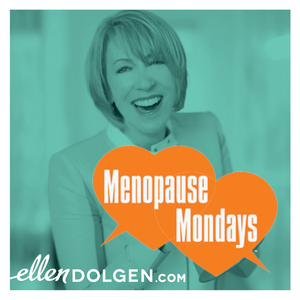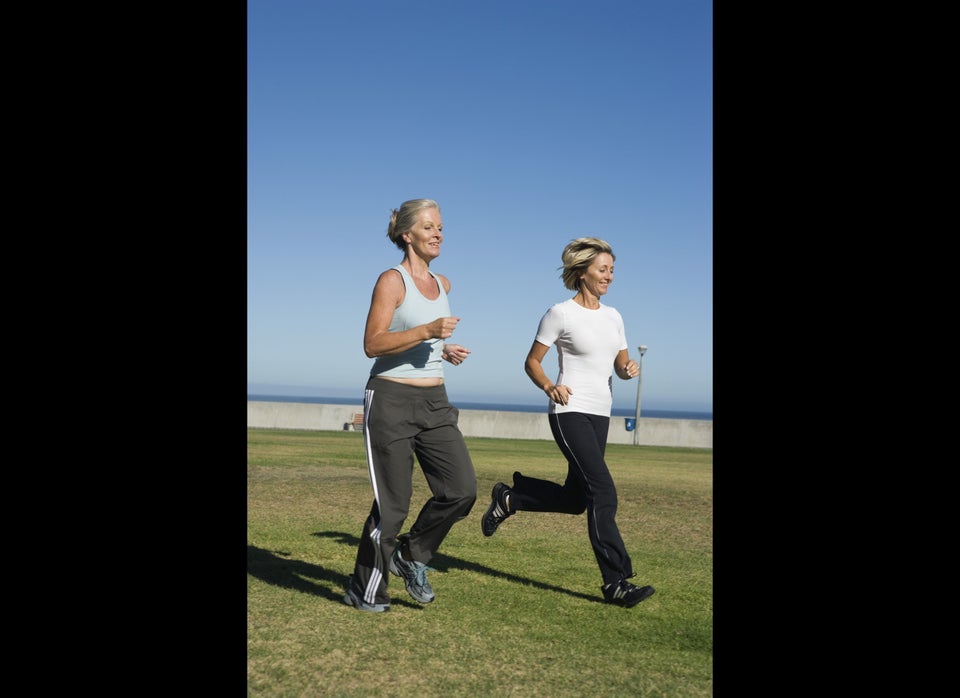 Suffering from menopausal hot flashes? No problem! Just take some opium and call me in the morning. Or perhaps you'd prefer a little cannabis?
Suffering from menopausal hot flashes? No problem! Just take some opium and call me in the morning. Or perhaps you'd prefer a little cannabis?
Sounds crazy, huh? But back in the 1800s, that's what doctors prescribed for their menopausal patients.
References to menopause can be traced far beyond the 1800s. In fact, Aristotle supposedly referred to menopause, saying it began at 40 years of age.
If you're wondering where the term "menopause" came from, it was coined in 1821 by French physician Charles Pierre Louis De Gardanne (la ménépausie). What I'm wondering is why a woman didn't name it. Then again, us women are known to call it MANY (unrepeatable) things, which is probably why it was left up to a man.
Societies have been dealing with menstruation and menopause since biblical times. Anita Diamant, author of the bestselling novel The Red Tent, said in an interview with Ms. Magazine that menstrual tents and huts were all over the world in various premodern societies. However, the "red tent" referred to in her book was a fictional one that she created.
She's not that far off, though. In some religious practices, women immerse themselves in a ritual bath following their menstrual periods or after childbirth in order to become pure and permitted to resume sexual activity.
Similar restrictions have been placed on menstruating women by other major religions of the world. They have addressed menstruation and its negative effect on women. This has led to prohibitions on physical intimacy, cooking (I can deal with that prohibition!), attending places of worship, even requiring women to live separately from men during their cycles. In some religions, menstruating women are considered "impure." In others, menstruating women are thought to lose qi or chi (life force).
Even the symptoms of menopause differ throughout the world. In the West, for example, menopause is often marked by hot flashes. In Japan, it's shoulder pain and in India it's low vision.
So how have women coped with menopausal symptoms in years past?
According to the American Cancer Society, "cohosh" is a Native American word that means "knobby rough roots," describing the appearance of the plant's roots. Native Americans used black cohosh to treat uterine disorders such as menstrual and menopausal symptoms.
Today, women still use black cohosh as a natural treatment for menopausal symptoms. Although, according to NAMS (North American Menopause Society), evidence about the effectiveness and safety of black cohosh for treatment of hot flashes is mixed: Some studies show improvement of menopause symptoms and some show no benefit. Other Native American herbal treatments for menopause-related symptoms included alfalfa, chasteberry, dong quia, maca, oak, sage, red clover, star anise and sweetgrass.
In an excerpt from the book Hot Flushes, Cold Science: A History Of The Modern Menopause, author Louise Foxcroft says the term "hysteria" was often used by doctors in describing their menopausal patients. (Gee, wonder where they got that idea??)
The book gives accounts from the mid-1800s in England of doctors prescribing a pre-meal mixture of carbonated soda. Other remedies included a large belladonna plaster placed at the pit of the stomach and vaginal injections with a solution of acetate of lead. No wonder women were reduced to hysteria! Prescriptions ranged from opium and hydochlorate of morphine to chloric ether and distilled water.
Before 1880, treatments for menopausal symptoms primarily consisted of herbals, along with a selection of belladonna, cannabis or opium. (Guess these women got more bong for their buck!) In the 1890s Merck offered these chemicals along with the flavored powder Ovariin for the treatment of menopausal symptoms and other ovarian ills. Ovariin was made by dessicating and pulverizing cow ovaries, and may have been the first substance commercially available for treatment of menopausal symptoms derived from animal sources. Testicular juice also was used as a treatment. (I'm not going there!)
In the 1930s, menopause was described as a deficiency disease. Emminen became commercially available in 1933. Diethylstilbestrol (DES) was first marketed in 1939 as a far more potent estrogen than Emminen. In 1942, Ayerst Laboratories began marketing Premarin, which would eventually become the most popular form of estrogen replacement therapy in the U.S., and Prempro, a combination of Premarin and Provera, which eventually became the most widely dispensed drug in the U.S.
Luckily, treatment of menopausal symptoms today is considerably more sophisticated than the remedies of yesteryear. Different forms of HRT and many non-hormonal options are available. The North American Menopause Society has published the first comprehensive set of guidelines that support clinicians involved in the care of women at midlife. The evidence-based recommendations have been published in the October 2014 issue of Menopause.
One thing that hasn't changed over the years is that women are still suffering from the symptoms of perimenopause and menopause. Today, at least we have many more treatment options to choose from.
Whether the treatment is a plaster of belladonna or getting plastered at the bar, I'd say we've come a long way! We've gone from the days of hysteria to the days of hysterical, with productions such as "Menopause the Musical." We may be able to laugh at our predicament, but it's one that we certainly take seriously.
Suffering in silence is OUT! Reaching out is IN!
For more by Ellen Dolgen, click here.
For more on women's health, click here.
Ellen Dolgen is an outspoken women's health and wellness advocate, menopause awareness expert, author, and speaker.
After struggling with her own severe menopause symptoms and doing years of research, Ellen resolved to share what she learned from experts and her own trial and error. Her goal was to replace the confusion, embarrassment, and symptoms millions of women go through-before, during, and after menopause-with the medically sound solutions she discovered. Her passion to become a "sister" and confidant to all women fueled Ellen's first book, Shmirshky: the pursuit of hormone happiness. As a result of the overwhelming response from her burgeoning audiences and followers' requests for empowering information they could trust, Ellen's weekly blog, Menopause MondaysTM, was born.
Menopause MondaysTM is a platform from which Ellen reaches the true needs of her readers through varied and substantive discussions of menopause, women's health, and the modern woman's life today as a menopausal woman. Her weekly newsletter provides readers the most current menopause news and research. With her updates, women gain access and the knowledge needed to take charge of their health and happiness. Her motto is: Suffering in silence is OUT! Reaching out is IN!
In addition to Ellen's ever-growing social media presence, EllenDolgen.com has fast become "the place" on the web for informative and entertaining women's menopause and wellness engagement. Ellen is #1 on Dr. Oz Sharecare.com Top 10 Social HealthMakers on Menopause. In 2012, 2013 and 2014, EllenDolgen.com/Menopause Mondays was named first on the list of the "Best Menopause Blogs" by Healthline. Ellen is also a regular contributor to over a dozen leading women's health blogs.
Like Ellen Dolgen on Facebook, follow her on Twitter and Pinterest, connect with her on LinkedIn, Google+, and Klout, watch her videos on YouTube, and subscribe to her newsletter.
Earlier on Huff/Post50:
